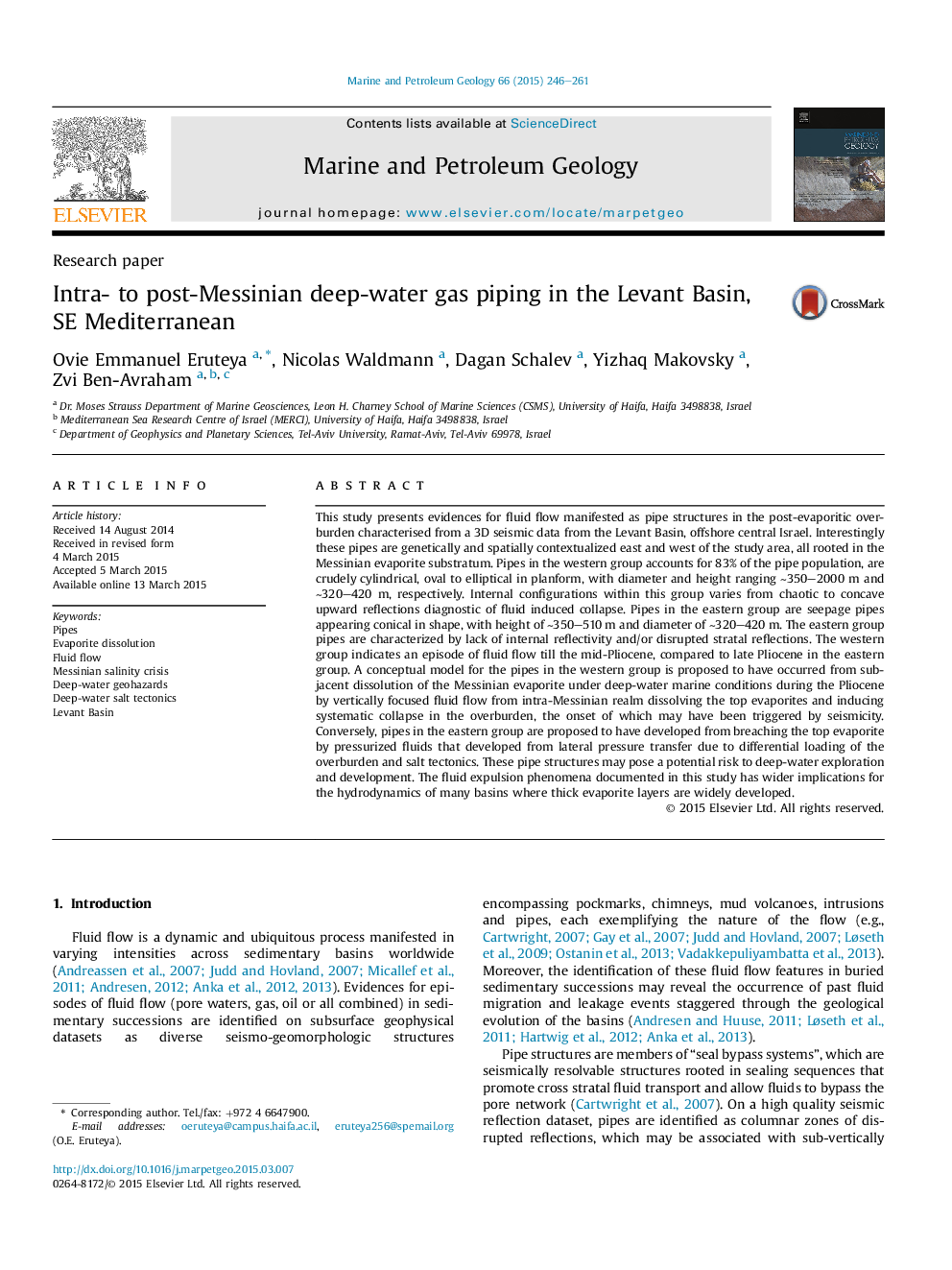| کد مقاله | کد نشریه | سال انتشار | مقاله انگلیسی | نسخه تمام متن |
|---|---|---|---|---|
| 4695526 | 1351612 | 2015 | 16 صفحه PDF | دانلود رایگان |

• Dissolution pipes and seepage pipes are documented in the post-evaporitic overburden.
• Piping continued till the Pliocene under deep-water marine conditions.
• A conceptual model for the genesis of the pipes is proposed.
• This study exemplifies the nature of fluid flow during and subsequent to the Messinian salinity crisis.
• Implications of pipe structures on deep-water hydrocarbon exploration and production are discussed.
This study presents evidences for fluid flow manifested as pipe structures in the post-evaporitic overburden characterised from a 3D seismic data from the Levant Basin, offshore central Israel. Interestingly these pipes are genetically and spatially contextualized east and west of the study area, all rooted in the Messinian evaporite substratum. Pipes in the western group accounts for 83% of the pipe population, are crudely cylindrical, oval to elliptical in planform, with diameter and height ranging ∼350–2000 m and ∼320–420 m, respectively. Internal configurations within this group varies from chaotic to concave upward reflections diagnostic of fluid induced collapse. Pipes in the eastern group are seepage pipes appearing conical in shape, with height of ∼350–510 m and diameter of ∼320–420 m. The eastern group pipes are characterized by lack of internal reflectivity and/or disrupted stratal reflections. The western group indicates an episode of fluid flow till the mid-Pliocene, compared to late Pliocene in the eastern group. A conceptual model for the pipes in the western group is proposed to have occurred from subjacent dissolution of the Messinian evaporite under deep-water marine conditions during the Pliocene by vertically focused fluid flow from intra-Messinian realm dissolving the top evaporites and inducing systematic collapse in the overburden, the onset of which may have been triggered by seismicity. Conversely, pipes in the eastern group are proposed to have developed from breaching the top evaporite by pressurized fluids that developed from lateral pressure transfer due to differential loading of the overburden and salt tectonics. These pipe structures may pose a potential risk to deep-water exploration and development. The fluid expulsion phenomena documented in this study has wider implications for the hydrodynamics of many basins where thick evaporite layers are widely developed.
Journal: Marine and Petroleum Geology - Volume 66, Part 1, September 2015, Pages 246–261